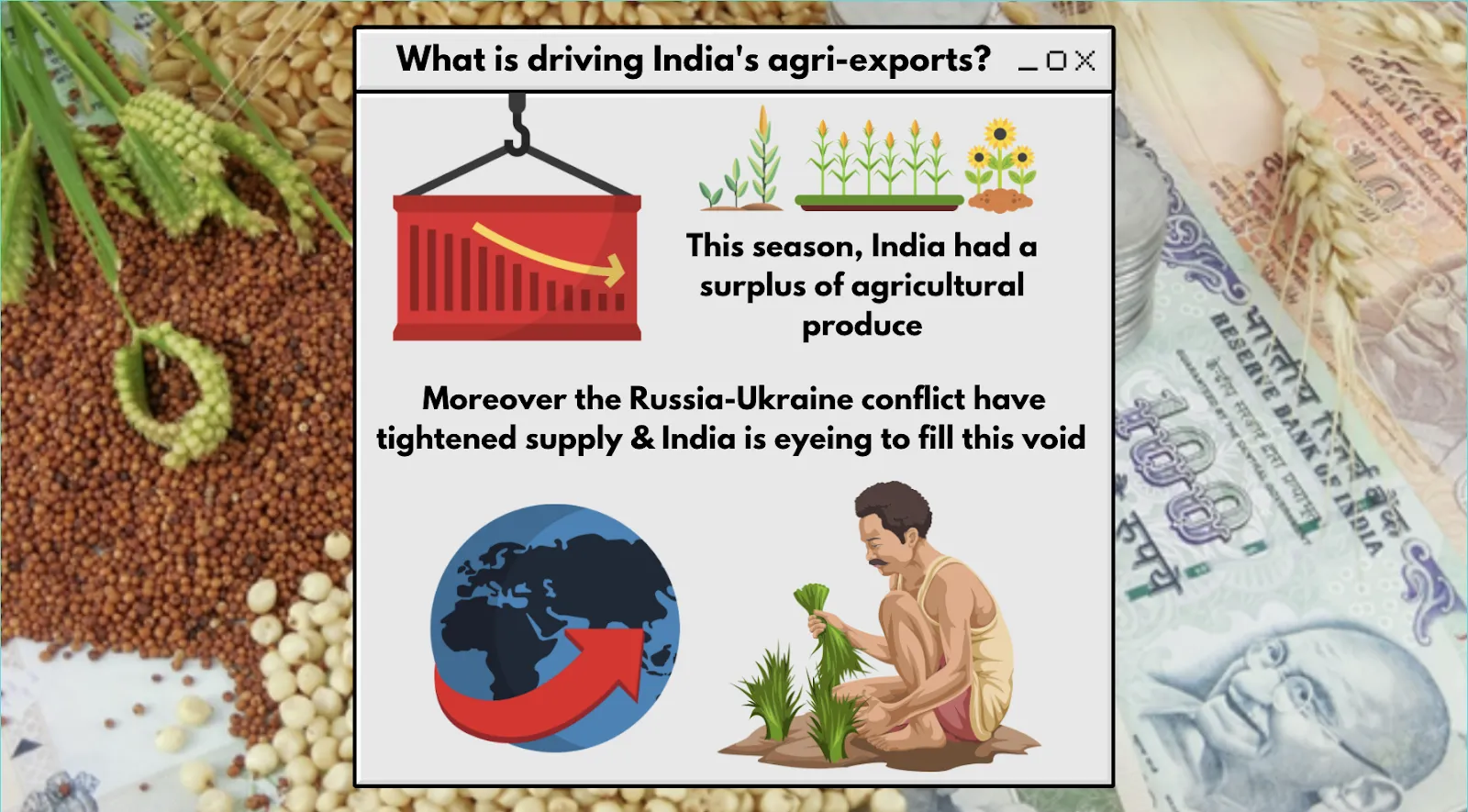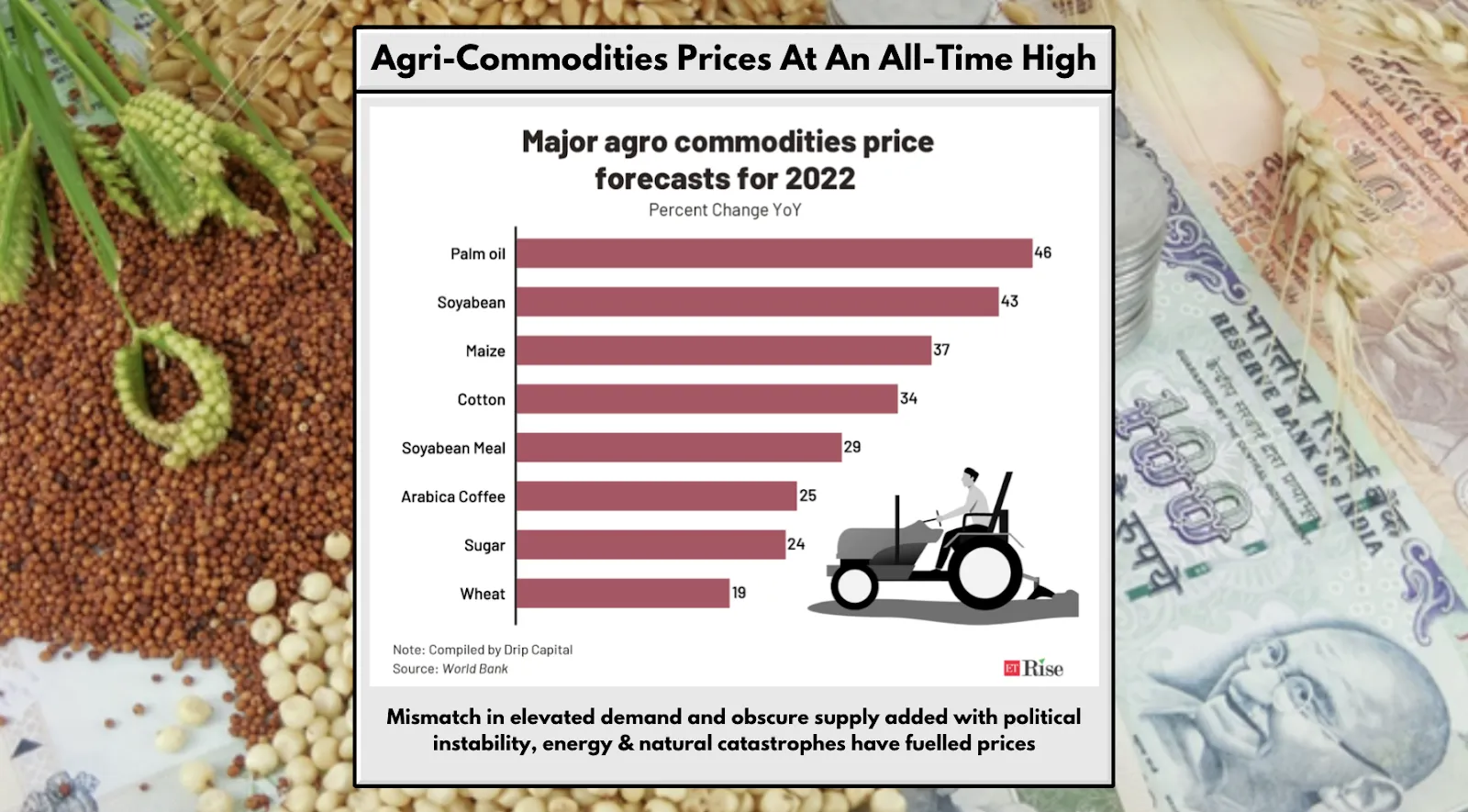- Tools

Get your
financial
Advise - Services

Get your
financial
Advise - About
-
News & Blogs
-
Start Investing
Find the
Perfect Portfolio
- Sign In









 Also, India is in final talks to supply wheat to Egypt, the largest buyer in the world. Piyush Goyal (Minister of Commerce & Industry) has proclaimed that wheat exports are likely to cross USD 100 lakh tonnes this fiscal.
Also, India is in final talks to supply wheat to Egypt, the largest buyer in the world. Piyush Goyal (Minister of Commerce & Industry) has proclaimed that wheat exports are likely to cross USD 100 lakh tonnes this fiscal.



